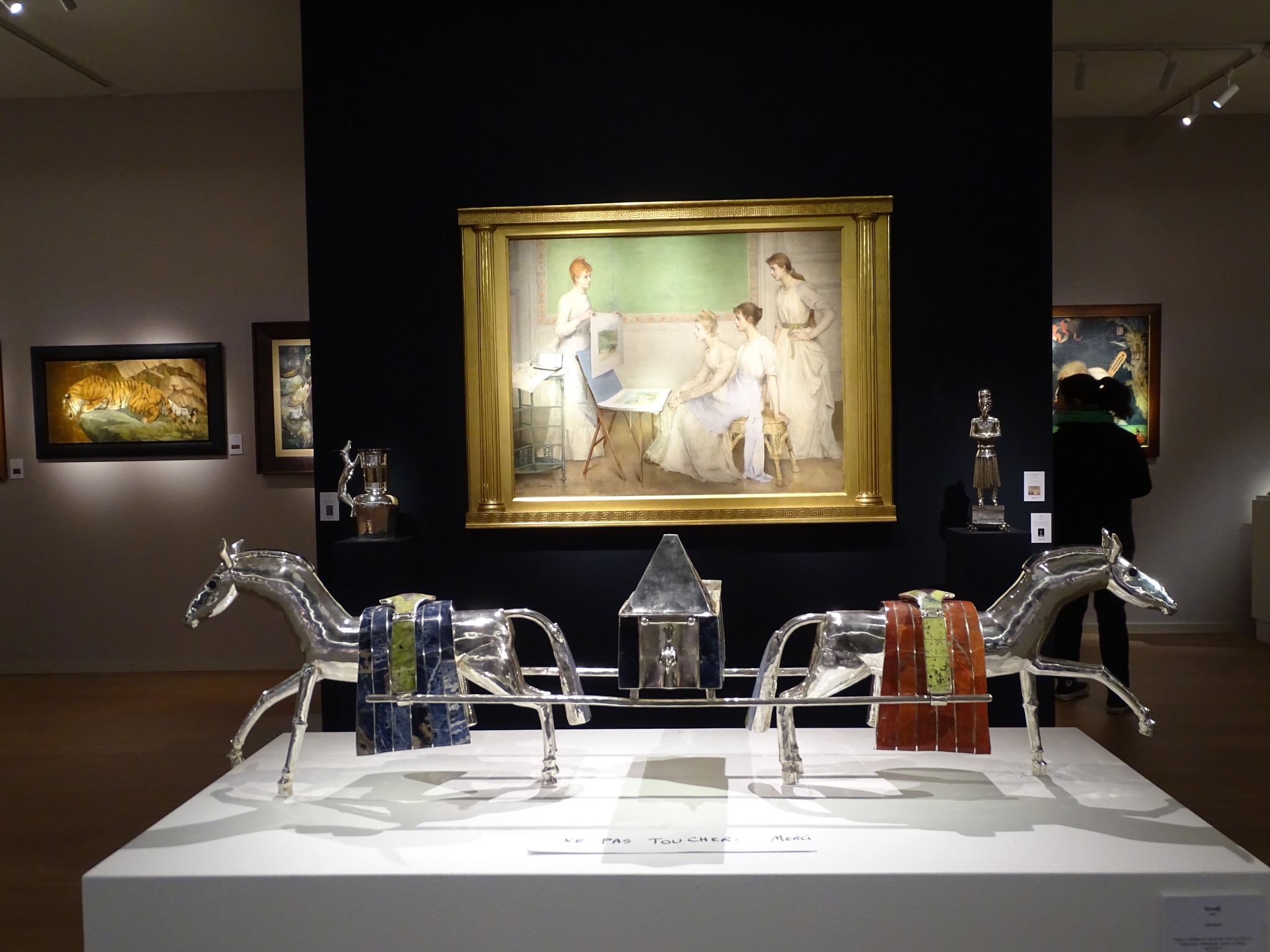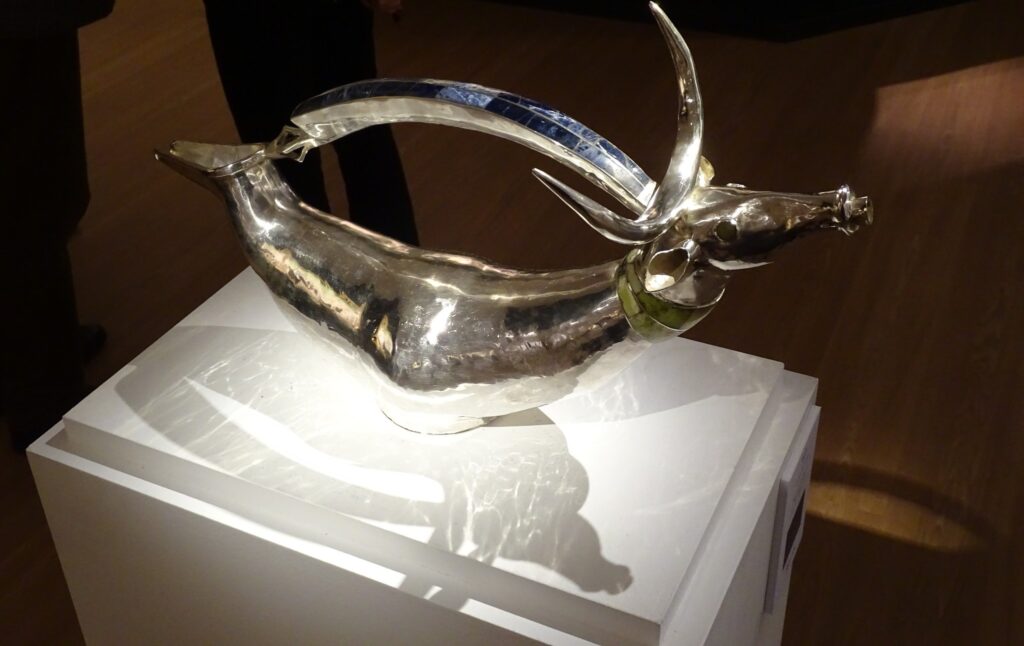
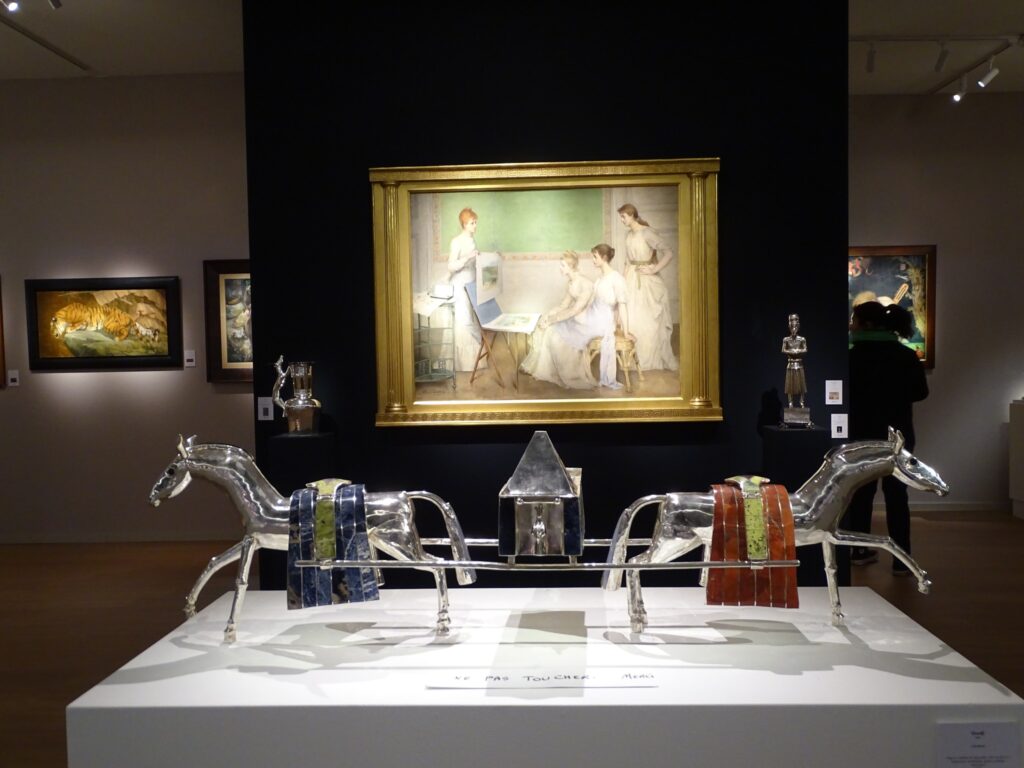
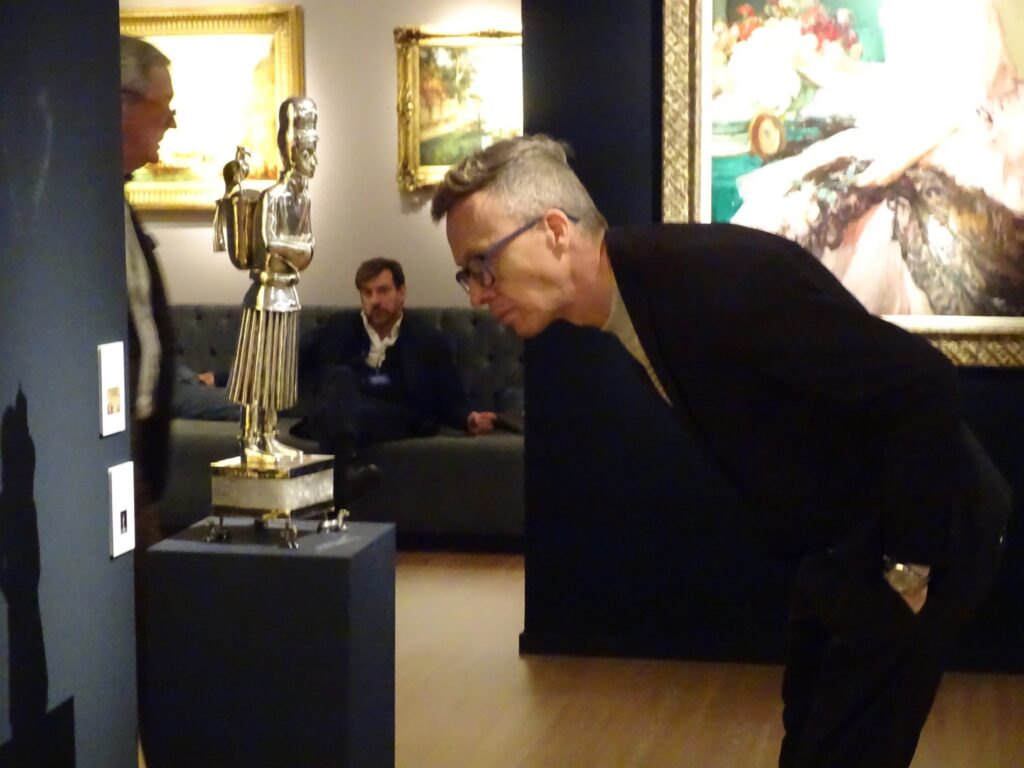
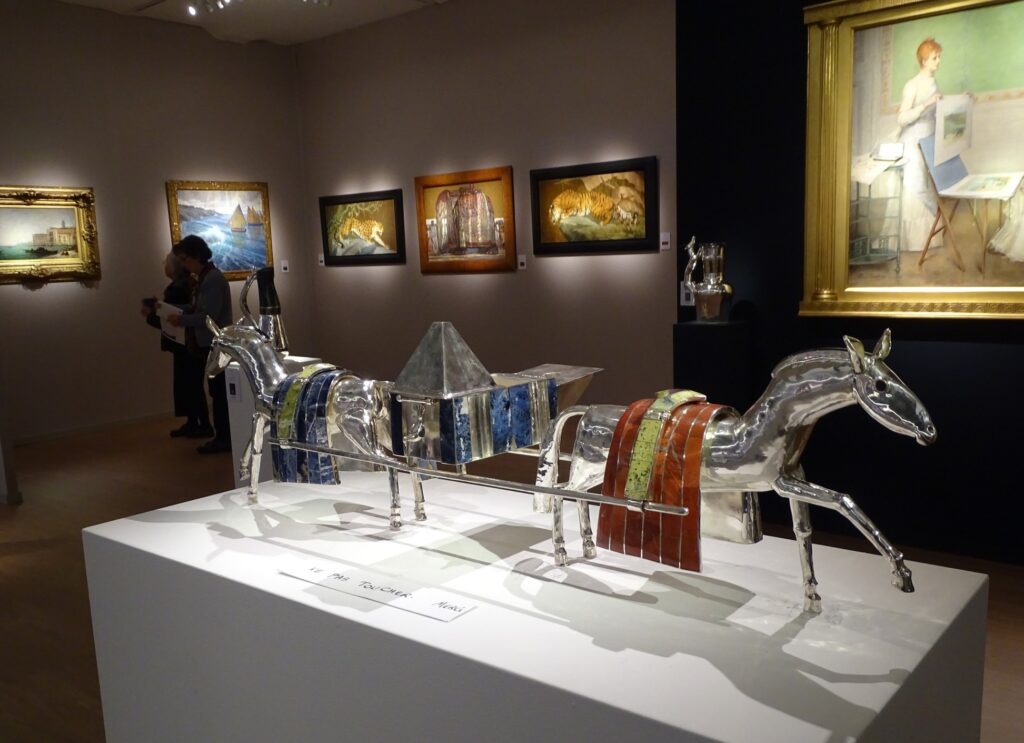
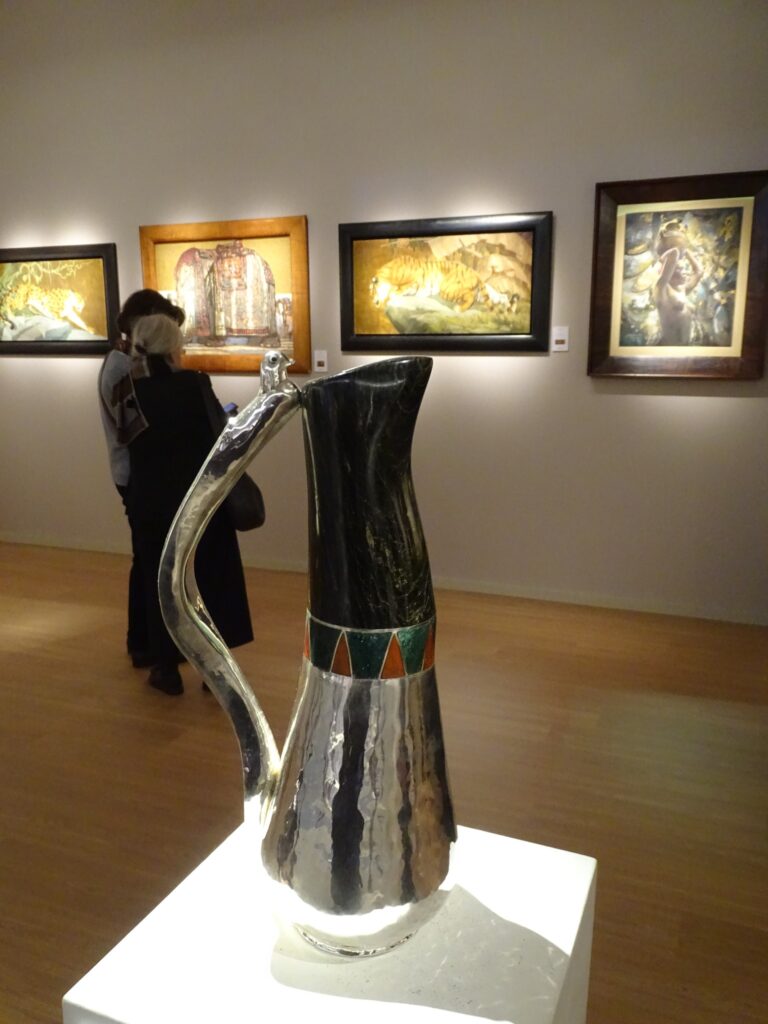
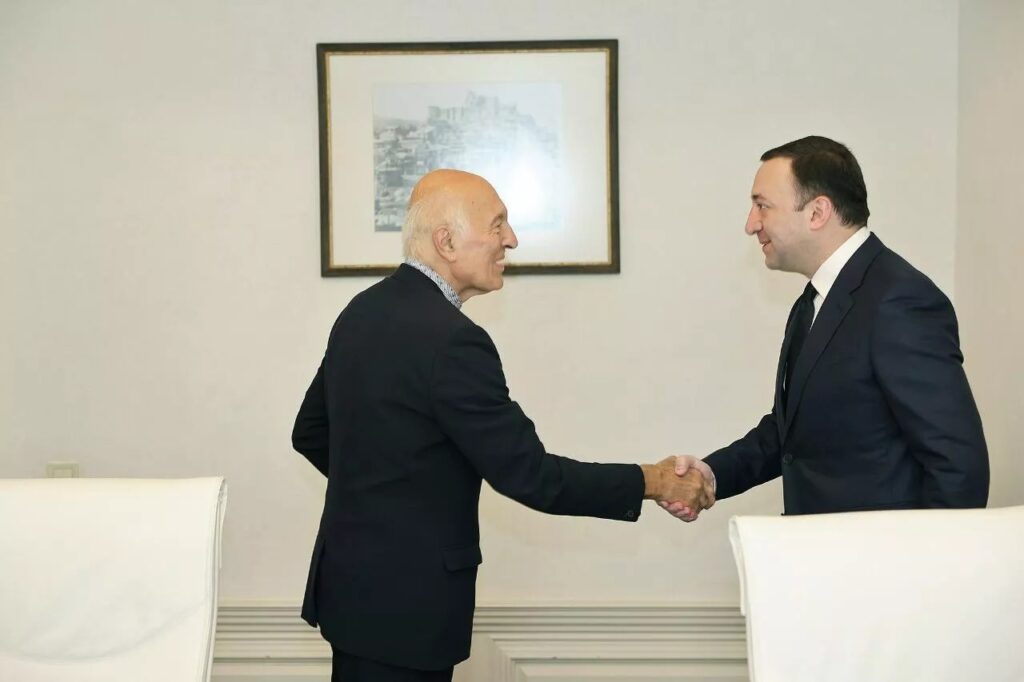
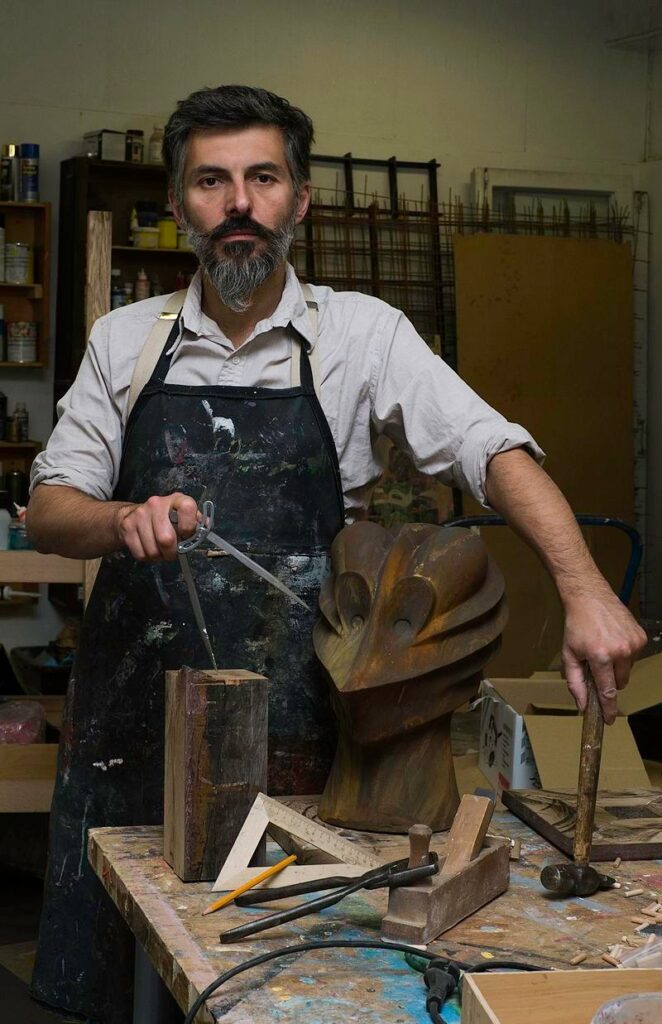
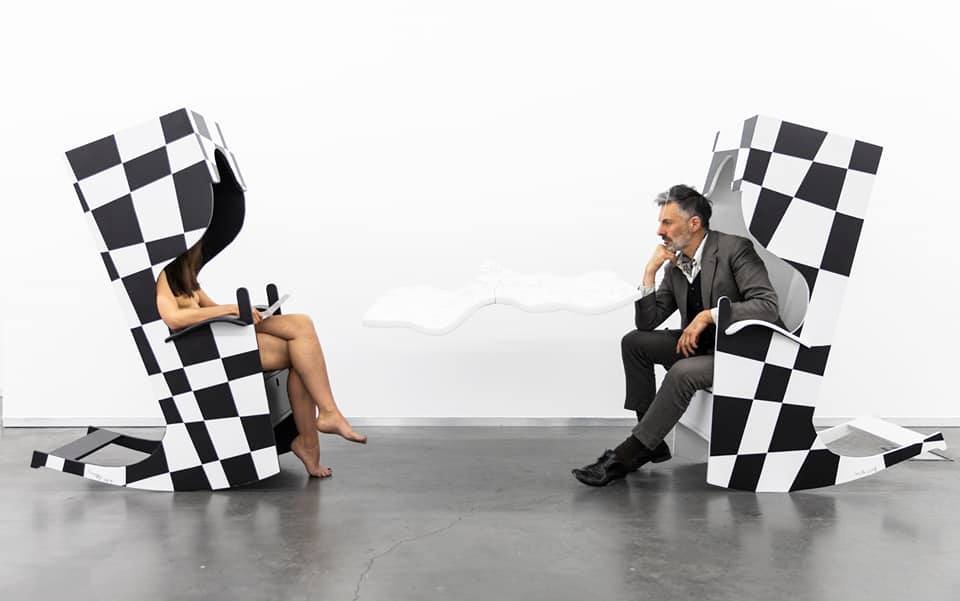
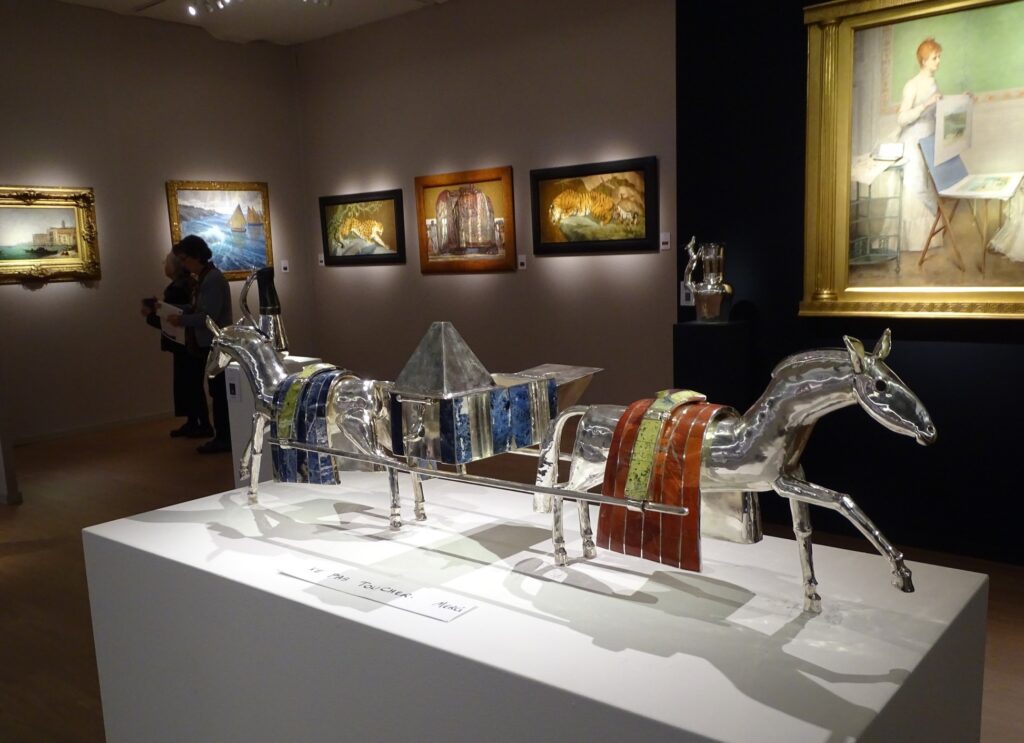
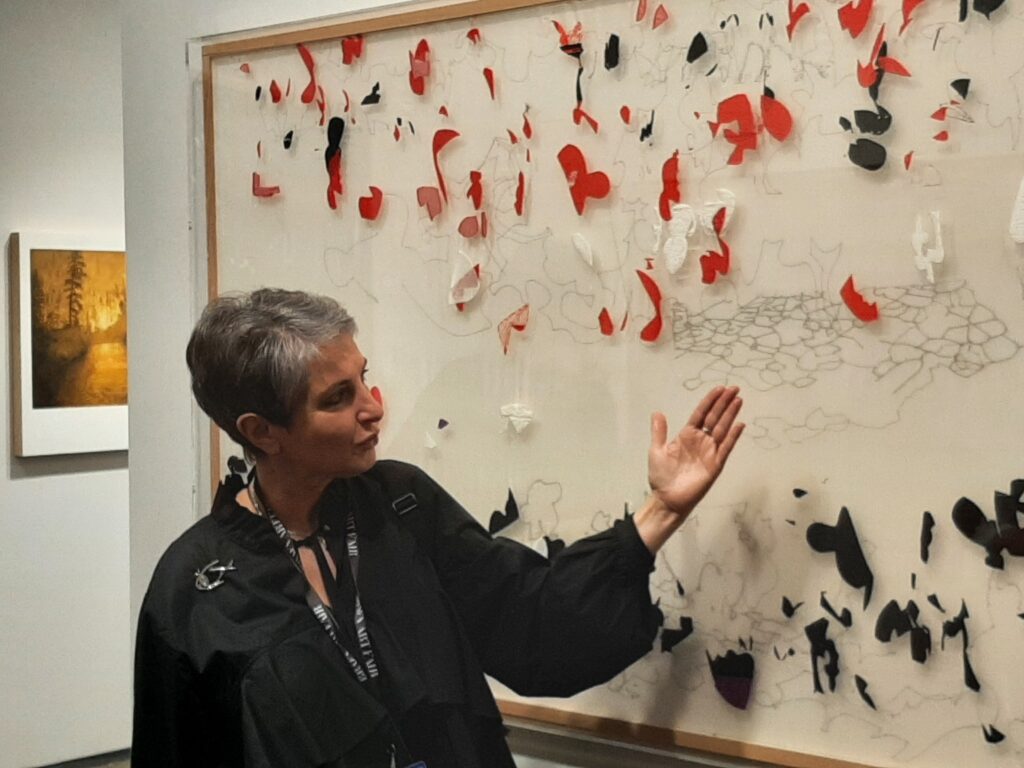
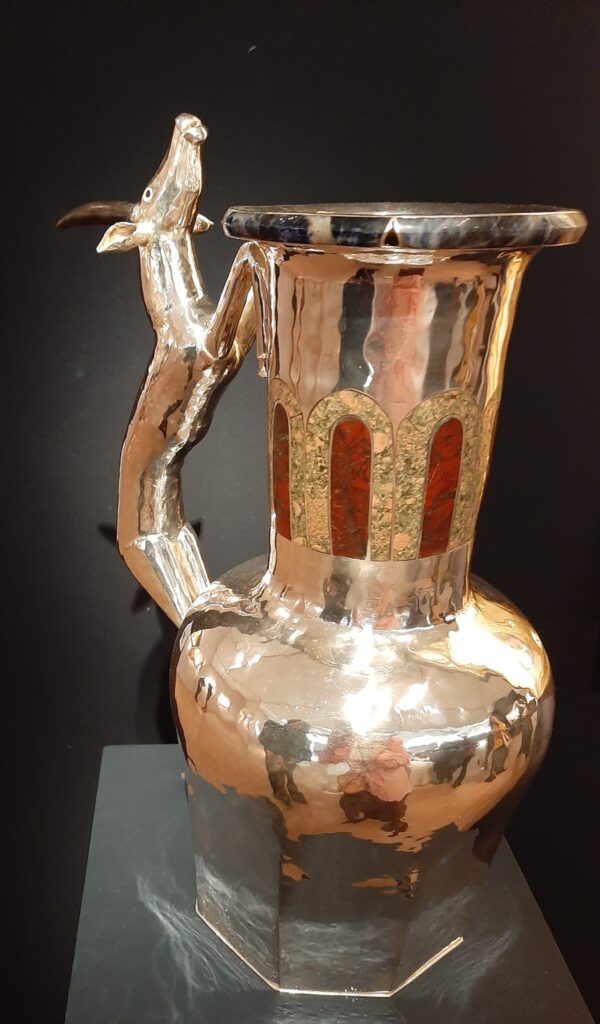
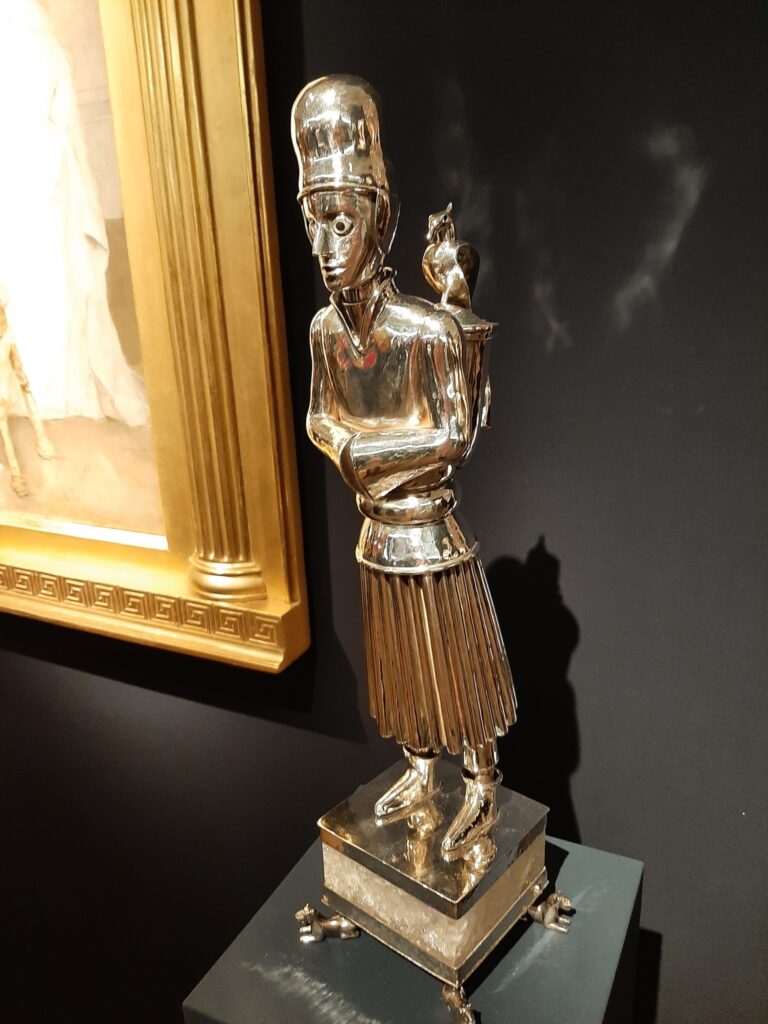
“My ‘coup de cœur’ at BRAFA with a personal touch – Georgian jeweler Goudji, also known as Giya Amashukeli. I intentionally use religious terminology because his jewelry specialization revolves around objects of religious worship. Goudji has created 50 works for the Cathédrale Notre-Dame de Chartres, including sacred vessels, candlesticks, and ciboria, making the Chartres collection one of the most significant collections of liturgical works by a jeweler in France. My introduction to Goudji came from the guide and art historian Tatiana Avtsina, whose detailed narration about the Georgian jeweler left a lasting impression on those who attended her tour. The pieces showcased at BRAFA have a secular character, but an experienced eye can discern their connection to Christianity, as well as the influence of centuries-old Georgian culture. The jewelry sculptures are exquisite, displaying meticulous craftsmanship and execution.
Amashukeli’s life story is ideal for cinematic adaptation. Born in Borjomi and raised in Batumi, after completing the Tbilisi Art School, he moved to Moscow in 1962. Starting his career as a sculptor with the dream of becoming a jeweler, he married Catherine Barsac, the daughter of a French theater director working at the French Embassy in Moscow, in 1969. After five years of personal appeals to French President Georges Pompidou (!), Goudji moved to Paris in 1974, marking the beginning of his successful French career as a jeweler.
The personal touch comes from my acquaintance with Amashukeli’s son from a previous marriage – Russian artist Gosha Ostretsov – at NK-gallery in Antwerp a few years ago. I have been enamored with his personality and creativity ever since. Georgy, in his artistic practice, delves into comic aesthetics, creating an original iconography reminiscent of mainstream comics. Unlike American artists like Andy Warhol and Roy Lichtenstein, Ostretsov doesn’t copy others’ illustrations but develops his own graphic narrative, close to action-style comics.
“Georgy Ostretsov’s artistic strategy follows the poststructuralist thesis of Michel Foucault, according to which subjectivity is produced by power, leaving the subject with the only option of practicing resistance – namely, parodying the mechanisms of power in the act of performative action.” Handsome, charming, and talented, just like his father. His mother, Lyudmila Ostretsova, is an art historian, and his wife, Lyudmila, is also an artist. Georgy lived in Paris for ten years, but in the late 1990s, as many moved westward, he, a natural rebel, decided to stay in Moscow after presenting his project at the Photo Biennale.”

